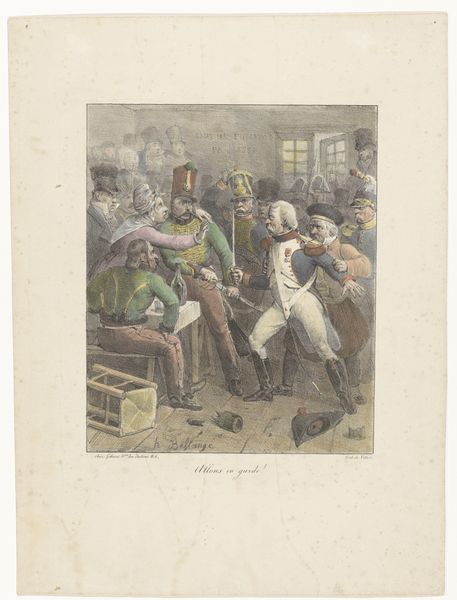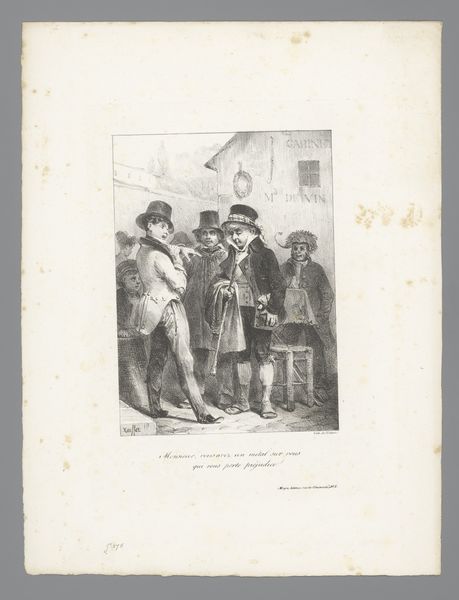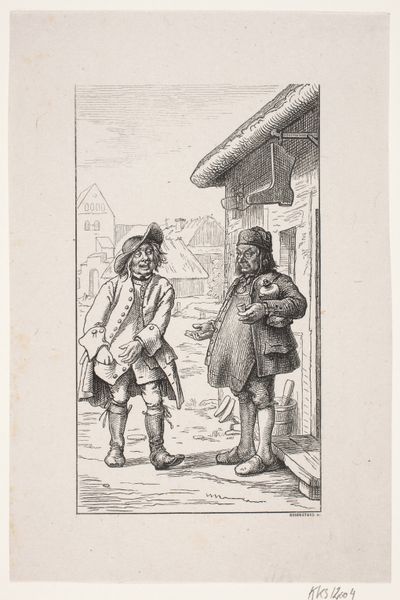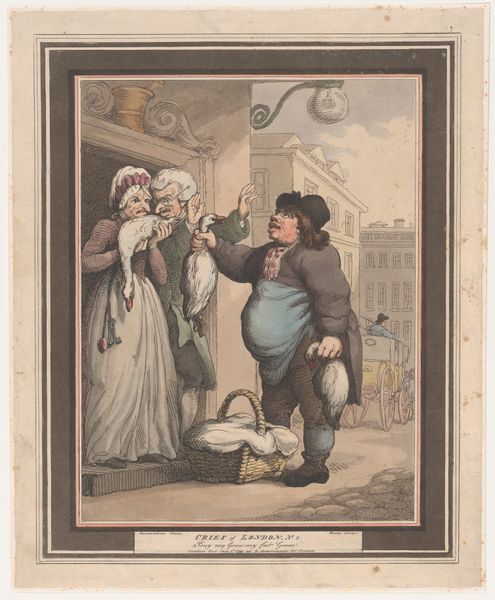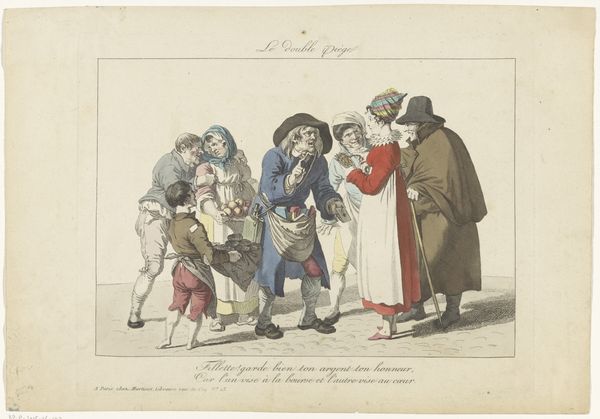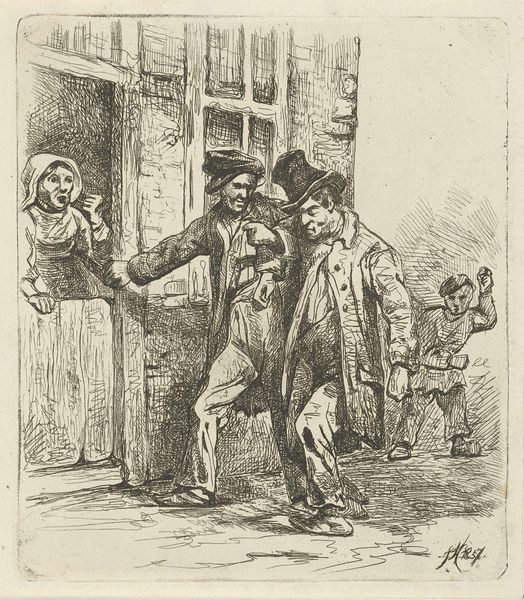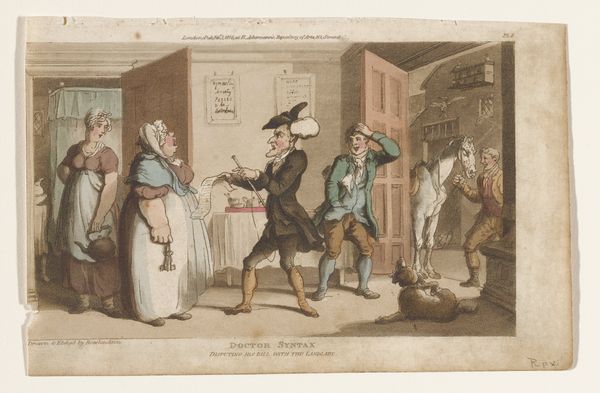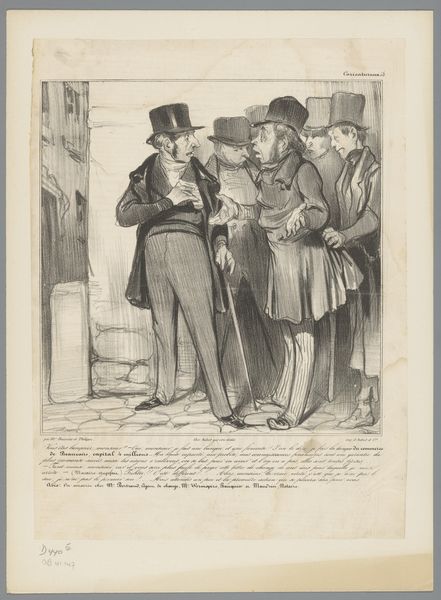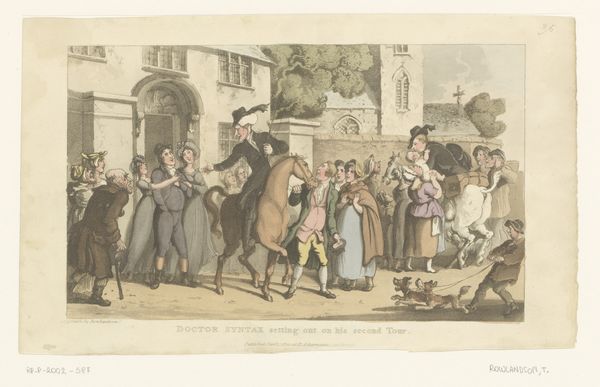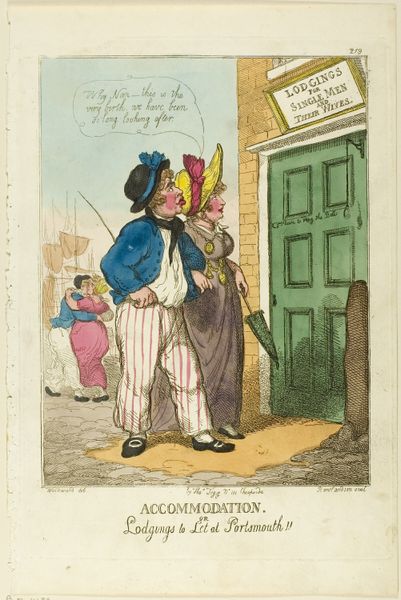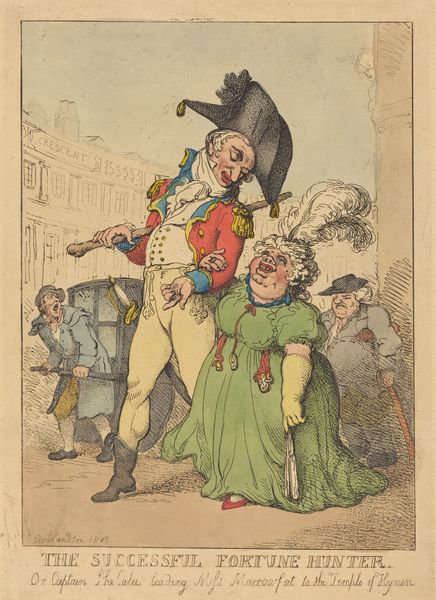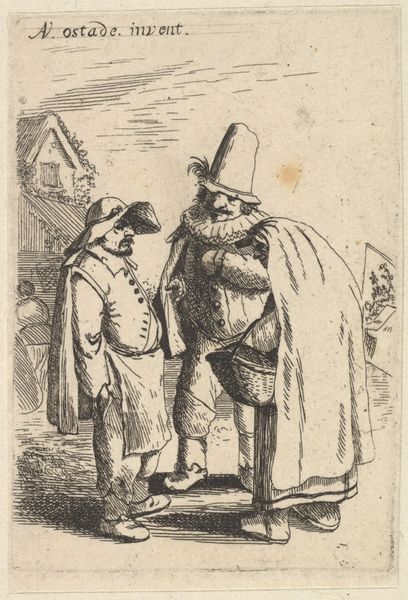
Deftig geklede heer ontsteekt zijn sigaar aan de pijp van een arbeider in lompen 1834
0:00
0:00
lithograph, print
#
narrative-art
#
lithograph
# print
#
folk-art
#
romanticism
#
genre-painting
#
watercolor
#
realism
Dimensions: height 354 mm, width 266 mm
Copyright: Rijks Museum: Open Domain
Curator: Welcome. Today, we’re looking at “Deftig geklede heer ontsteekt zijn sigaar aan de pijp van een arbeider in lompen,” an 1834 lithograph print by Hippolyte Bellangé, held here at the Rijksmuseum. The title translates roughly to “A well-dressed man lights his cigar from the pipe of a worker in rags." Editor: Immediately, the power dynamic hits you, doesn't it? It's such a loaded image. The stark contrast between the men’s clothing tells a whole story in itself, reflecting the massive social inequality of the time. It feels both observed and staged, like a moment meticulously chosen for impact. Curator: Absolutely. Bellangé was known for his interest in depicting military life, but he also delved into these social commentaries. Lithography as a medium enabled the wider circulation of such observations, making them accessible to a broader public. Editor: And that accessibility is key. Think about the gaze involved. The dapper gentleman isn't just lighting his cigar; he's performing a sort of ritual dependence upon this laboring man, highlighting class differences in a single, shared flame. There’s also a suggestion of exoticism – smoking was still a relatively novel practice for many, so there is status associated with access to that pleasure. Curator: True. Bellangé's piece exists within the burgeoning realism movement, keen to capture everyday life without romanticization, while the detail also reflects aspects of Romanticism evident in the intense focus on the lived experience of that time. Editor: The setting itself adds to that experience. The street setting suggests both happenstance and a posed scene. There is also a third male figure partially revealed in a building which almost suggests a play is about to be acted out with these different characters playing symbolic roles. Curator: Considering its time, what readings do you think people might have had? Editor: Probably varied ones. Some might see simple street genre depiction while others would consider it a symbol of systemic injustice or an illustration of everyday class dynamics that might not always be clear when thinking about politics or governance. I find myself also thinking about who could afford the print to view this. It feels subversive but its accessibility also creates the potential for critique and social change. Curator: A wonderful insight, revealing the potential impact of the artwork during its own time. Thank you. Editor: Thank you, as well, for this opportunity to look more closely at this fascinating and rather telling slice of life.
Comments
No comments
Be the first to comment and join the conversation on the ultimate creative platform.
